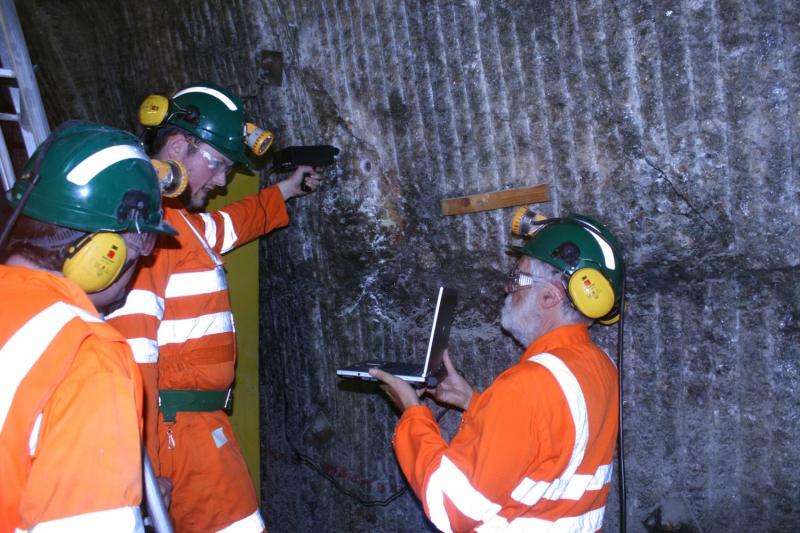Astrobiologists study Mars-like environments on Earth to better understand extra-terrestrial signs of life

Recently, a team of astrobiologists from the EU funded MASE (Mars Analogues for Space Exploration) project descended 1.1 kilometers below Earth's surface to the Mars-like environment of the Boulby Mine in the UK looking for answers about life on other planets. Six members of the MASE team headed to the mine on the North East coast of England to study ancient formations of honey-comb like hexagonal patterns that were formed 250 million years ago. Similar geological formations have been observed on Mars and the analysis of these rocks will help future space missions to better identify potential sites to look for biosignatures.
Speaking about the recent investigation, MASE Scientific Coordinator Professor Charles Cockell from the UK Center for Astrobiology explains: "In Boulby the rocks were formed around 250 million years ago, in a giant inland sea. We think the polygonal shapes are connected to the expansion of salt when the sea periodically dried out, similar to the processes we see in places like Death Valley in California today. These features are similar to some environments we see on Mars. We suspect that the rims contain clay, iron and organics and we want to test the hypothesis that they contain signatures of life."
The objective of the campaign to Boulby Mine was to collect solid samples to study their composition whilst at the same time testing different life-detection instruments that can be used to study salt deposits on Earth and elsewhere. The campaign was also part of the UK Centre for Astrobiology's MINAR (Mine Analog Research) work that seeks to advance science and technology for planetary exploration using the mine.
The overall aim of MASE, a collaborative, four-year research project supported by the European Commission's Seventh Framework Programme (FP7 - Grant Agreement n° 607297), is to provide new insights into the adaptations of life to Mars-like conditions and the potential preservation of their biosignatures. The European Science Foundation (ESF) leads the co-ordination and dissemination strategy for MASE which is running from January 2014 to December 2017.
Speaking about their involvement, ESF Chief Executive, Jean-Claude Worms said: "The European Science Foundation works closely with the MASE team, supervising the administrative and scientific progress of this unique project. ESF has a long track history in key European initiatives to advance research on life-detection in extraterrestrial environments. Through sampling of analogue sites, studying and stressing anaerobic organisms as well as mimicking the natural fossilisation processes, the MASE project addresses our current limitations in knowledge and will advance our ability to assess the habitability of Mars and detect life. "
The MASE team is drafting the first scientific publications, which will be publicly available in Open Access format and widely disseminated through scientific databases.
More information: mase.esf.org/
Provided by European Science Foundation


















